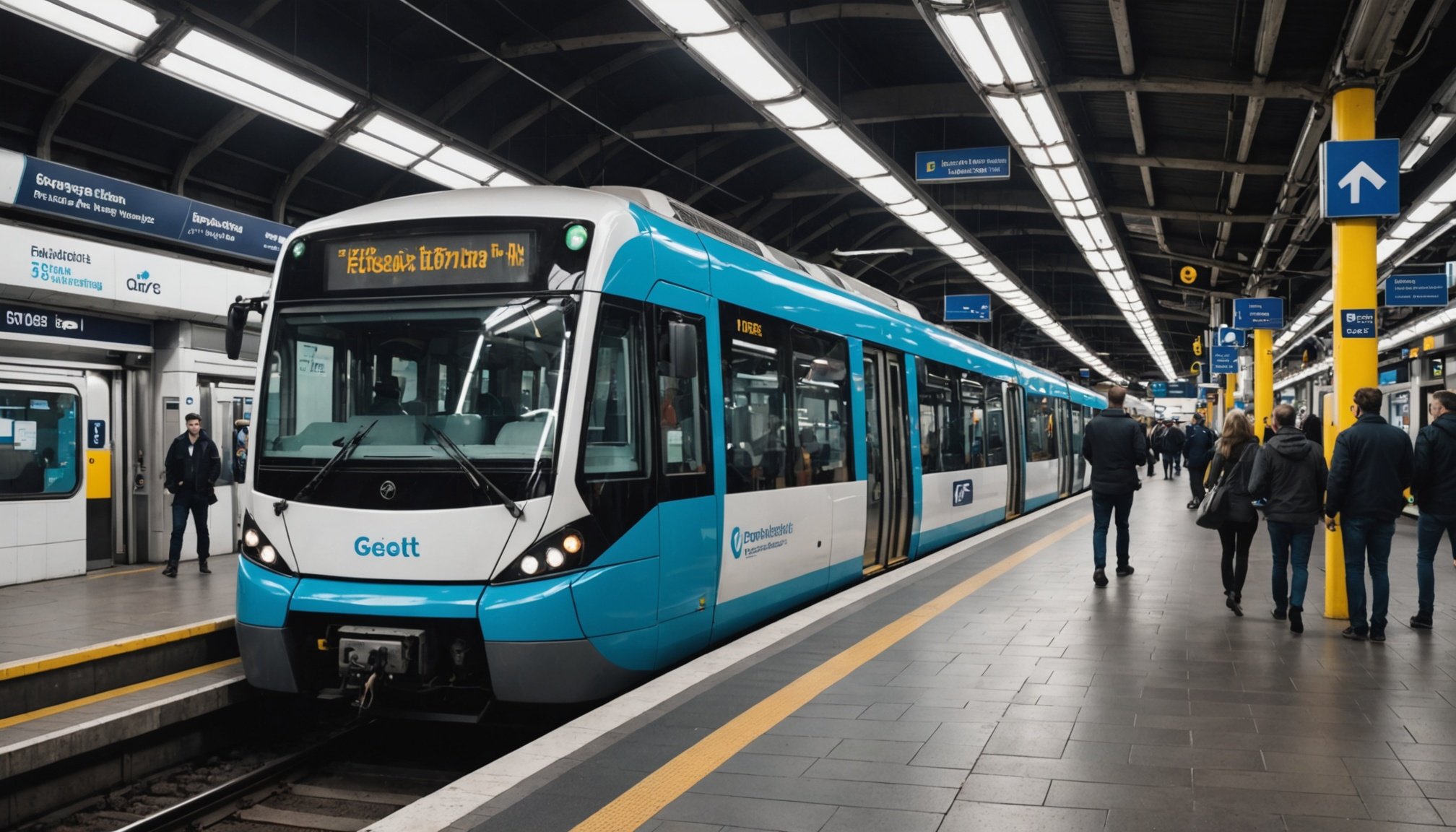Understanding Predictive Analytics in Urban Transport
Incorporating predictive analytics in engineering urban transport systems can significantly transform how cities operate. At its core, predictive analytics involves using historical data, machine learning, and statistical algorithms to forecast future events. Urban transport systems can leverage this by anticipating traffic patterns, scheduling public transport efficiently, and reducing maintenance costs through predictive maintenance.
AI applications play a crucial role in enhancing predictive capabilities. For example, AI-driven technologies analyze real-time data from sensors and cameras across urban transport networks. This analysis is fundamental for predictive maintenance, allowing engineers to identify potential failures before they occur. Machine learning models can pinpoint anomalies in vehicle performance, thus enhancing reliability and extending the lifespan of transport assets.
Also to see : Revolutionary Innovations Transforming Electric Vehicle Batteries for Extended Range and Rapid Charging
Predictive analytics leads to improved operational efficiency within urban transport systems. By accurately forecasting demand, transport authorities can optimize resource allocation, minimizing delays while enhancing passenger satisfaction. Moreover, predictive tools can assist in the development of dynamic pricing models, ensuring fare systems are equitable and reflective of current conditions.
As cities continue to grow, integrating AI applications in urban transport systems promises not only efficiency but also sustainability, making dense city living more manageable and reducing environmental impact through optimized operations.
This might interest you : How AI Revolutionizes Traffic Management to Alleviate Congestion in Urban Centers During Rush Hours
Case Studies of AI Implementation in Public Transportation
AI’s integration into public transportation showcases numerous real-world applications with marked improvements. The following examples delve into specific case studies, highlighting successful implementations and lessons learned.
City A: Success Story of Predictive Maintenance
In City A, AI-driven predictive maintenance has revolutionised public transportation. By deploying AI algorithms to monitor and analyse data from vehicle sensors, City A can anticipate when maintenance is required before issues arise. This proactive approach reduces downtime and minimises unexpected breakdowns, leading to improved transit reliability. The predictive models have not only optimised maintenance schedules but also extended the asset lifespan, resulting in significant cost savings and enhanced passenger satisfaction.
City B: Overcoming Challenges through AI
City B faced challenges with service delays and unanticipated passenger loads. Through implementing AI solutions, they developed a dynamic scheduling system capable of real-time data analysis and responsiveness to changes in demand. This integration has yielded smoother transitions and fewer disruptions, making public transport more dependable and efficient.
City C: Achieving Operational Excellence
In City C, AI applications focused on achieving operational excellence and improving customer experiences. By leveraging AI for route optimisation and traffic management, City C has enhanced its transport system’s overall punctuality and efficiency. AI’s continuous feedback loops and predictive analysis models have fostered an environment of continual improvement, reflecting the potential of AI in transforming public transportation into a streamlined, customer-centric service.
Benefits of Harnessing AI for Predictive Maintenance
Predictive Maintenance powered by Artificial Intelligence (AI) offers significant advantages in maintaining operational reliability across transportation systems. By leveraging AI’s analytical capabilities, organisations experience enhanced reliability and reduced downtime. With precise predictions regarding equipment failure, transportation systems can operate more smoothly, contributing to increased passenger safety and satisfaction.
One of the core Benefits of AI in this context is cost savings. Predictive Maintenance uses AI to analyse vast datasets, allowing for efficient resource management and objective planning of maintenance schedules. This strategic approach minimises unnecessary repairs and optimises personnel deployment, reducing overall maintenance costs.
Beyond financial savings, AI-enhanced Predictive Maintenance significantly improves the passenger experience. By ensuring timely maintenance and addressing issues before they lead to service interruptions, passengers encounter fewer delays and cancellations. A seamless travel schedule not only enhances customer satisfaction but also fosters trust in the transportation service.
Thus, the adoption of AI in Predictive Maintenance showcases a transformative potential in the transportation sector. It leads to an ecosystem where machines predict their maintenance needs, optimising both operational reliability and user experience. Organisations are encouraged to explore AI methods that align with their specific operational structures, promising a future of increased efficiency and safety.
Challenges in Implementing AI-Driven Maintenance Strategies
Adopting AI-driven maintenance strategies in urban transport is not without its hurdles. While these technologies promise efficiency and predictive power, several key AI challenges can affect their implementation.
Data Quality and Integration
Data integrity is paramount in deploying AI solutions. Poor data quality can lead to inaccurate predictions, thus hampering predictive maintenance efforts. Urban transport systems often grapple with data silos, hindering integration processes. It’s critical to employ advanced integration techniques to ensure that all relevant data can be accessed and analyzed cohesively.
Technology Adaptation and Workforce Training
A significant challenge in urban transport’s AI journey is the technology adaptation required for existing infrastructure. Additionally, workforce training is crucial. Employees must acquire new skills to manage and maintain AI systems effectively. Providing comprehensive training programs ensures that staff are equipped to handle the evolving technological landscape, facilitating smoother transitions and preserving system integrity.
Addressing Public Concerns
Urban transport systems also face hurdles related to public concerns regarding privacy and reliability. Addressing these concerns involves clear communication with the public about the security measures and benefits of predictive maintenance technologies. Transparency and demonstration of improved service reliability can foster public trust, leading to wider acceptance of AI-driven solutions.
Future Trends in Predictive Analytics for Urban Transport
The future directions in predictive analytics for urban transport are both promising and transformative. Emerging technologies such as the Internet of Things (IoT), machine learning, and artificial intelligence (AI) have the potential to significantly enhance the efficiency and accuracy of predictive maintenance solutions in smart transportation. By leveraging IoT sensors, real-time data from various transport modes can be collected and analysed to anticipate and mitigate disruptions before they occur.
Anticipated changes within urban transport systems are closely tied to advancements in AI, enabling dynamic traffic management, personalised passenger experiences, and optimised route planning. For example, AI-driven systems can adapt to real-time conditions, reducing congestion and improving the overall travel experience.
Moreover, the integration of AI in urban transport will likely prompt potential policy and regulatory developments. As cities become smarter, regulations must evolve to address privacy concerns and data security, ensuring that AI implementations do not compromise individual rights. Governments and institutions will play a critical role in fostering an environment that supports innovation while safeguarding public interests.
These developments show a clear path towards making urban transport more efficient, responsive, and sustainable, driven by predictive analytics and technology.











